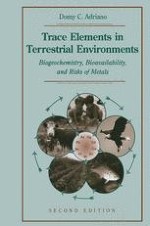2001 | Buch | 2. Auflage
Über dieses Buch
Knowledge is not to be sought Jor the pleasures oJ the mind, or Jor contention, or Jor superiority to others, or Jor profit, or Jame, or power, or any oJ these inJerior things, but Jor the benefit and use oJ life. -Sir Francis Bacon Based on citations in the literature, it is evident the first edition, entitled Trace Elements in the Terrestrial Environment (1986), met its primary ob jective, which was to provide students and professionals with a comprehen sive book in many important aspects of trace elements in the environment. Indeed the extent of its use has exceeded my expectations. As a result of its usefulness and encouragement by colleagues in the field, I was compelled to write this edition following a similar format, but including new chapters on biogeochemistry, bioavailability, environmental pollution and regulation, ecological and human health effects, and risk and risk management and expanding the coverage to include freshwater systems and groundwater where appropriate. In addition to plants, which was the main biota of emphasis in the earlier edition, fish and wildlife and invertebrates (both terrestrial and aquatic) are discussed as necessary. The ecological and human health effects of major environmental contaminants, such as As, Cd, Cr, Pb, and Hg are also highlighted, along with relevant information on potential risks to the ecology and human health.
Anzeige
